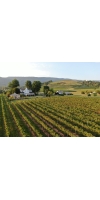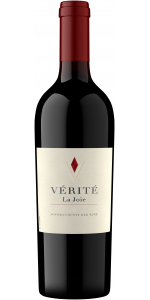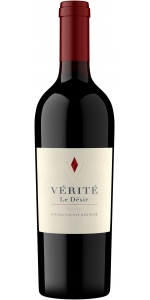Wine from Verite

Jess Jackson (1930–2011) was already the founder of one of the most successful family-owned wine companies in the United States when he met Pierre Seillan during a visit to France in the 1990s.
A true visionary, Jackson’s lengthy career, which spanned more than 30 years, was driven by a passion for producing extraordinary wine from California’s best vineyards. Jackson had longed to create a wine that would be just as good as the world’s best wines and was confident that the terroir in Sonoma County had that potential.
A friendship developed between the Jackson family in California and the Seillan family in Bordeaux. When Pierre Seillan visited California in 1997, he too saw the potential and did not hesitate when Jackson asked him to come to Sonoma County to realize this dream together. And so, Vérité was born.
Pierre Seillan has spent the past five decades perfecting his micro-cru philosophy to create world-class wines. His passion lies in crafting wines from diverse terroirs, using the same approach to capture the unique expressions of Sonoma County, Bordeaux, and Tuscany in each vintage.
Seillan’s career in the wine industry began at Bellevue, his family's estate in Gascony, France, where he learned to grow Cabernet Sauvignon, Merlot, Cabernet Franc, and several white varieties. Later he focused on Cabernet Franc at Château de Targé in the Loire Valley. Seillan then spent two decades in Bordeaux making wine at several châteaux for Raoul and Jean Quancard. While working across eight different appellations, he quickly discovered the many nuances within various vineyard sites. This became the backbone of his micro-cru philosophy and allowed him to build the elegant and complex architecture of his wines.
Verite La Joie Red is made from 76% Cabernet Sauvignon, 9% Merlot, 7% Cabernet Franc,5% Petit Verdot, 3% Malbec.
The 2018 La Joie displays a brilliant violet core with a thin rim of bright ruby. Generous fruit-for- ward aromas of ripe black currant and black cherry are followed by earthy notes of fresh conifer, dried mushroom, black olive, dusty clay, anise and clove. The palate is rich and structured; possessing similar flavors of the nose, refined tannins, well-balanced acidity and a complex, luscious finish.
Review:
Blackberries, black mushrooms, violets, flowers, and dark tobacco. Black truffle, too. Full-bodied, yet in check and pretty. The fine tannins frame the wine perfectly. Really long and focused. Seamless. Elegance with power. This will age incredibly well, but already so gorgeous to try. 76% cabernet sauvignon, 9% merlot, 7% cabernet franc, 5% petit verdot and 3% malbec. Try after 2026, but attractive now.
-James Suckling 99 Points
Verite Le Desir Red is made from 82% Cabernet Franc, 12% Merlot, 6% Malbec.
The 2018 Le Désir has a dark inky appearance with a violet hue that extends to the rim. The compelling characteristics of Cabernet Franc are expressed on the nose and palate with flavors of crunchy cranberry, ripe raspberry, red currant, dried sage, crushed mint, and cinnamon bark; followed by spice cake, subtle vanilla liquor, and singed toast. The persistent finish and bright acidity suggest the wine will continue to evolve in the cellar for many years to come.
Review:
The Cabernet Franc blend of the trio, the 2018 Le Desir is 82% Cabernet Franc, 12% Merlot, and 6% Malbec, and as with all these wines, it was brought up in new barrels. Ruby/purple and not completely opaque, it offers up a classic Cabernet Franc nose of mostly red fruits, spring flowers, damp earth, cedary spices, and truffle. Medium to full-bodied on the palate, it shines for its incredible elegance and purity more than outright power, yet it still brings plenty of richness. With ultra-fine tannins, perfect balance, and one heck of a great finish, it's another great, great wine from this estate.
Jeb Dunnuck 98+ Points
- back
Selected Options
Wineries
Categories
Pricing
Countries
Regions
Grape Types
Wineries
Organic/Free Shipping
Justin Vineyards & Winery Isosceles Reserve is made from 86% Cabernet Sauvignon, 6% Merlot, 4% Cabernet Franc, 3% Malbec and 1% Petit Verdot
Dark, ruby/purple core with a medium intensity rim and moderately stained tears. Complex and very aromatic with black cherry, cassis, toasty vanilla, cinnamon, cedar, graphite, oak, dusty leaf notes, star anise and red licorice. Full bodied, with ripe black fruit of cherry, currant and berry with baking spice on entry. The mid-palate features sustained fruit with sweet tobacco, leather, vanilla and licorice, and mouth coating tannins that balance its full fruit character through a very long, fresh and beautifully balanced finish that evolves with a complex mix of fruit, spice and savory elements.
The 2016 ISOSCELES Reserve is a bold, but balanced wine that pairs nicely with rich meat dishes like slow cooked stews and braises, but shines beautifully with a simple grilled ribeye steak.
Review:
Clean lines of blackberry jam, charred toast and crushed slate make for a focused nose in this reserve blend of 86% Cabernet Sauvignon, 6% Merlot, 4% Cabernet Franc, 3% Malbec and 1% Petit Verdot. It is very dense and thick on the palate, where mocha, caramel, loamy earth and dark berry flavors align into an lusciously rich yet elegantly dry experience.
-Wine Enthusiast 95 Points
Kynsi Pinot Noir Edna Valley is made from 100 percent Pinot Noir.
The Edna Valley was one of the first registered appellations in California and boasts a rich agrarian history. The coastal terrain features varied soil types that are predominantly marine in origin, with ancient volcanic influences. The unusual transverse ranges allows the appellation to open up to the cooling breezes of the Pacific Ocean from nearby Morro Bay and Pismo Beach. The climate is strongly influenced by the ocean providing ideal, temperate growing conditions for Pinot Noir. Early spring warming, mild summer temperatures and late arriving cold fall temperatures and rain provide a long growing season for the development of rich color with concentrated and complex flavors.
Aged 16 months in French Oak barrels, 25% new.






